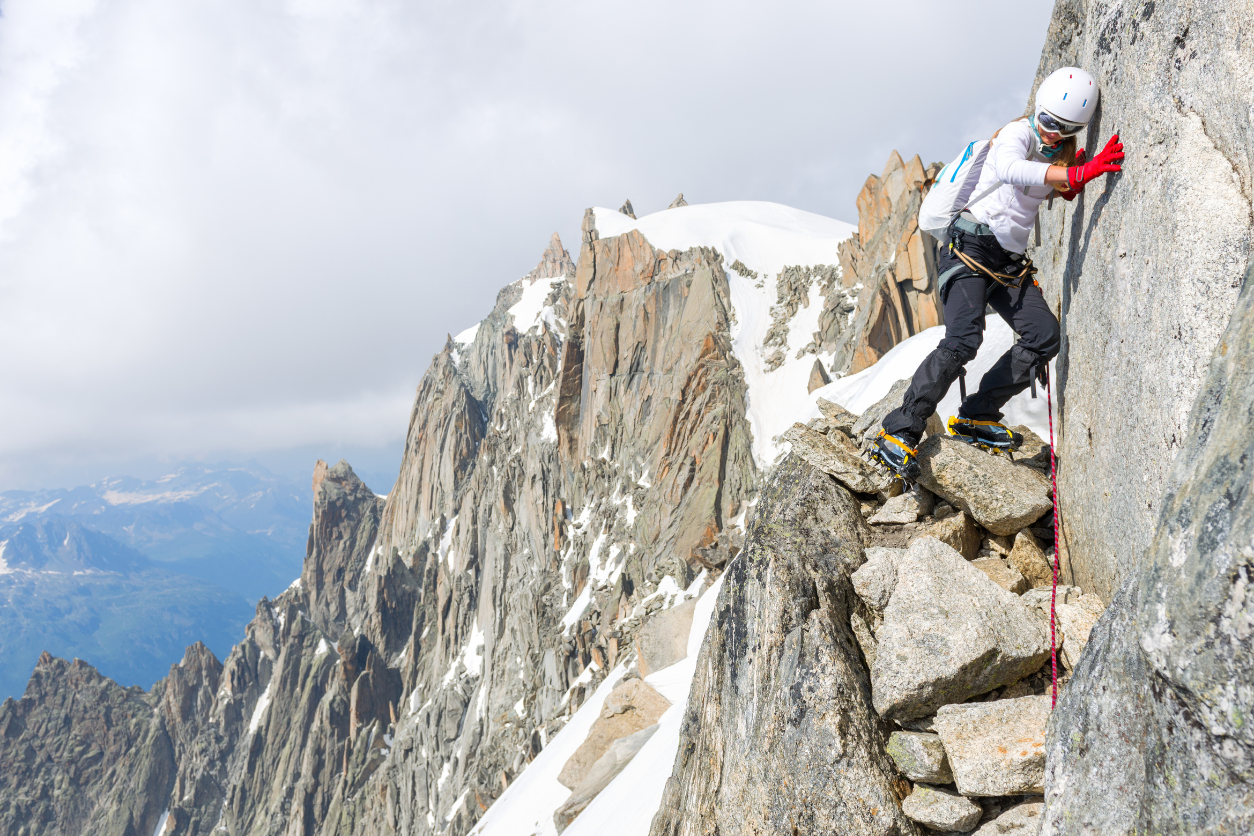Conquering the Fear of Heights While Climbing: A Unique Perspective!

You’re at the base of a rock wall, looking up at what seems like an endless climb. Your heart pounds, your palms sweat, and your mind starts racing with “what ifs.” The fear of heights—also known as acrophobia—can be a real obstacle when it comes to climbing. But it doesn’t have to be. With the right approach, you can turn that fear into fuel for your climbing journey.
Let’s explore some strategies that can help you overcome the fear of heights while climbing, but with a twist—by viewing the process through a different lens.
Reframe the Fear: It’s Not Your Enemy
Fear is often seen as something negative, something to be avoided. But what if you could change your perspective? Instead of fighting the fear, try to see it as a companion on your journey—a natural response that’s there to keep you safe.
- Acknowledge the Fear: Start by recognizing that fear is a part of the experience. It’s your body’s way of staying alert, keeping you aware of potential dangers. By acknowledging its presence, you begin to demystify it.
- Use It as Fuel: Instead of letting fear paralyze you, channel it into focus and determination. Let it heighten your awareness and sharpen your senses. The goal isn’t to eliminate fear but to use it constructively.
Start at Ground Level: The Power of Baby Steps
Jumping straight into a high climb can be overwhelming. Instead, build your confidence gradually by starting with low-level climbs and working your way up.
- Stay Close to the Ground: Begin with bouldering or low climbs that keep you closer to the earth. These lower-altitude challenges allow you to focus on technique without the added stress of significant height.
- Celebrate Small Wins: Every successful climb, no matter how small, is a victory. Celebrate these wins—they build confidence and create a positive association with climbing.
Breathe Through the Moments of Panic
When fear strikes, your body reacts. You might feel your chest tighten, your breath quicken, or your muscles tense up. The solution? Breathe. Simple, but powerful.
- Practice Deep Breathing: When you feel panic rising, pause and take a few deep breaths. Inhale slowly, hold for a moment, and then exhale fully. Remember, exhaling fully is the most important part of deep breathing. This slows your heart rate and calms your mind.
- Create a Breathing Rhythm: Match your breathing to your movements. This rhythm not only keeps you calm but also helps you maintain a steady pace during your climb.
The Mental Climb: Visualization Techniques
Your mind is a powerful tool. Before you even start your ascent, mentally prepare by visualizing success.
- See Your Path: Close your eyes and picture yourself moving smoothly up the wall. Imagine every move, every handhold, and every foot placement. Visualizing your climb can build confidence and reduce anxiety.
- Imagine Overcoming Obstacles: Don’t just visualize the perfect climb—think about how you’ll handle challenges. This mental rehearsal prepares you to face any surprises with calm and confidence.
Trust in What Holds You: Gear and Partner
A significant part of height-related fear stems from concerns about safety. Trust in your equipment and climbing partner is essential.
- Get to Know Your Gear: Spend time learning about your equipment. Understand how it works and why it’s designed to keep you safe. The more familiar you are with your gear, the more you’ll trust it.
- Communicate with Your Partner: Clear communication with your climbing partner is crucial. Discuss your fears, agree on signals, and establish a strong partnership. Knowing that someone reliable is watching out for you provides reassurance.
Change the View: Break It Down
The whole climb might seem intimidating, but breaking it down into smaller segments can make it more manageable.
- Focus only on the next move: Instead of thinking about the entire climb, concentrate on getting to the next hold. This keeps your mind focused and prevents you from getting overwhelmed by the bigger picture.
- Set short-term goals: Set goals for each section of the climb. Reaching each goal gives you a sense of accomplishment and helps you maintain momentum.
Embrace the Journey: Acceptance and Practice
Overcoming the fear of heights isn’t about flipping a switch—it’s about practice, patience, and self-acceptance.
- Embrace your fear: Understand that it’s okay to be afraid. Acceptance reduces the pressure you put on yourself and makes the fear more manageable.
- Keep climbing: The more you climb, the more familiar heights will become. Over time, what once seemed terrifying will start to feel normal. Persistence is key.
Final Ascent: Turning Fear into a Companion
Your fear of heights doesn’t have to be an obstacle; it can be a guide. By reframing your fear, starting small, practicing controlled breathing, visualizing success, trusting your gear, breaking the climb into less-intimidating sections, and embracing the journey, you can manage your fear and even use it to your advantage.
Climbing is as much a mental challenge as it is a physical one. The next time you’re facing a tall climb, take a deep breath, trust yourself, and remember—fear is just part of the adventure. You’ve got this!
Your Adventure, Our Experience
At TheCampingList, our dedication to authenticity and reliability stems from our own adventures in the great outdoors. Our team, comprised of seasoned experts in hiking, camping, climbing, cycling, fishing, and hunting, rigorously tests every product and shares insights drawn from real experiences. This hands-on approach ensures our reviews and guides meet the highest standards of durability, functionality, and comfort. Moreover, our platform thrives on the rich contributions and feedback from our vibrant community of enthusiasts. We pride ourselves on delivering unbiased, educational content that empowers and informs your outdoor pursuits. Trust in TheCampingList for genuine advice and support, where we're all about enriching your journey, every step of the way.